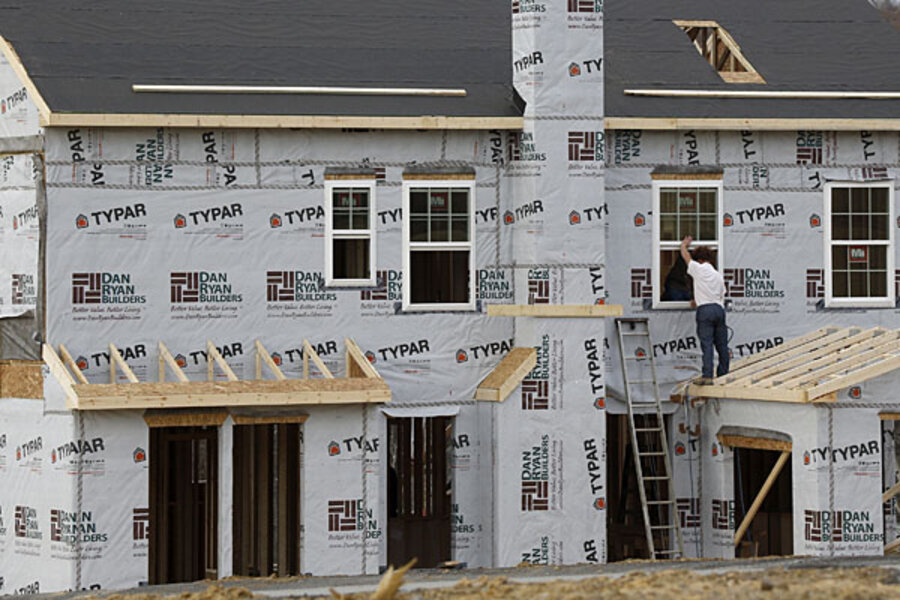New home sales plummet in March. Bad weather, or bad market?
Yesterday’s existing home sales report for March wasn’t good, but it wasn’t a disaster. The housing market saved that for today.
Sales of new homes plunged 14.5 percent last month to an annualized pace of 384,000 units and hit an eight-month low, according to figures released by the US Commerce Department Wednesday. That was not what analysts expected: The consensus prediction was that annualized home sales would actually tick up slightly, from 449,000 to 450,000. By region, sales fell sharply in the Midwest, South, and West but rose in the Northeast.
As with existing home sales, prices and supply of available homes continued to rise in March. The median price of a new home rose to $290,000 last month – up 12.6 percent from the same time last year and an all-time high. The supply of available homes ticked up to six months' worth.
“Like the single-family housing starts and permits estimates that they mimic, new home sales have essentially been moving sideways over the last year,” Patrick Newport, an economist with IHS Global Insight, writes via e-mailed analysis. “Since housing was supposed to play a pivotal role in getting the economy growing faster, that’s not good news.”
Until today’s report, new home sales had been growing relatively steadily over the past two years.
Ballooning prices, tighter lending standards, and a bad winter were all pointed to as symptoms of the slowdown. Mortgage applications have also been soft in recent weeks, suggesting that higher interest rates could be affecting demand. Similar factors played a part in the existing home sales decline.
Normally, rising prices and mortgage rates wouldn't be a major issue for housing market growth, says David Berson, chief economist for Nationwide Insurance, via telephone. "We’ve seen a decline in affordability," he says. "That usually happens with a good economy, which can overcome it. But not this time, because the overall recovery has been more modest, Unless we can more meaningful job growth [in the next few months] it will be hard for the housing market to surpass what we saw last year."
New home sales are also dependent on construction, which has faced some adversity recently. In addition to harsh winter conditions across most of the country, builders “are running into obstacles that keep them from ramping up on starts,” Mr. Newport writes. “Credit for builders and developers (and potential homeowners) remains tight. And construction costs are up sharply. Indeed, over the past year, construction costs for single-family homes have risen slightly more than the price of an average new home.”
Still, experts say, it isn’t quite time to hit the panic button. New home sales make up a fairly small portion of the US housing market; monthly sales can be volatile and subject to large later revisions. Housing starts, or the number of new homes on which builders began construction, have risen for the past two months, albeit slightly, and demand for both new and pre-owned homes continues to be strong. But whether this month’s disappointing report is a blip or signs of more serious underlying issues within the housing market remains to be seen.
"Overall, our view remains that housing will rebound once recent weather effects subside, albeit at a slower pace than in previous years,” Michael Gapen, an economist for Barclays Research, writes via e-mail. “That said, uncertainty about the underlying trend of the housing recovery remains elevated following subsequent shocks from higher mortgage rates and worsening affordability last year and adverse weather more recently. We look to the April-May data to provide more clarity.”
"Some of it was probably weather," Mr. Berson adds, "but it's too soon to tell. We need another month or two of weak data to say we’ve overestimated the housing rebound."







